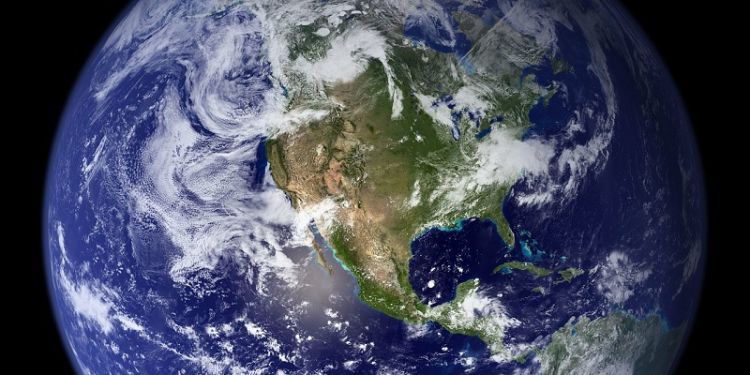Atmosphere and ocean dynamics

Group members working in this area:
Our group’s area of research:
The Earth’s atmosphere and ocean are continuously in motion. Our research involves modelling such motions using the equations of fluid dynamics.
Familiar examples are winds at the Earth’s surface, and the rise and fall of the ocean surface (perhaps as wind-generated water waves with a time-scale of a few seconds, or as tides with a time-scale of 12 hours or more). However, all sorts of other motions occur throughout the depths of the atmosphere and ocean, some of which can be observed from satellites or with other modern technology. These motions interact with one another in a complicated way, helping to determine the climate of the atmosphere-ocean system.
The emphasis is on developing relatively simple systems of equations, retaining only those physical processes which are necessary to describe the phenomenon. This approach lends itself to mathematical analysis, and has a rich history featuring distinguished scientists such as Laplace, Lord Rayleigh and Lord Kelvin. However, the classical approach is now complemented by the use of numerical solutions of less idealised situations, or complicated nonlinear or turbulent flows.
Present areas of research include:
Waves
- Breaking waves, and wave/structure interactions.
- Internal waves (wave attractors, numerical methods, oceanic internal tides).
- Ocean tides, and paleotides.
- Nonlinear wave equations.
Surface Flows
- Flood dynamics, and flood mitigation.
- Dynamics of beaches and granular flows.
- Laboratory experiments and demonstrations.
Hydrodynamic instabilities
- The stability of shear flows (linear analysis, nonlinear dynamics, transition to turbulence).
- Stability of rotating stratified flow.
- Pattern formation in convection and doubly-diffusive convection.
Numerical Methods and computation
- Computational techniques for PDEs.
- Data assimilation for numerical weather prediction.
Applications of mathematical methods
- Asymptotic analysis.
- Dynamical systems.
- Hamiltonian fluid dynamics.
Much of our methodology is similar to that employed by members of the department studying astrophysical fluid dynamics and applied nonlinear dynamics, leading to a strong interaction with these researchers. There are also collaborations with other research groups in the UK, France, the Netherlands, Canada and USA.

